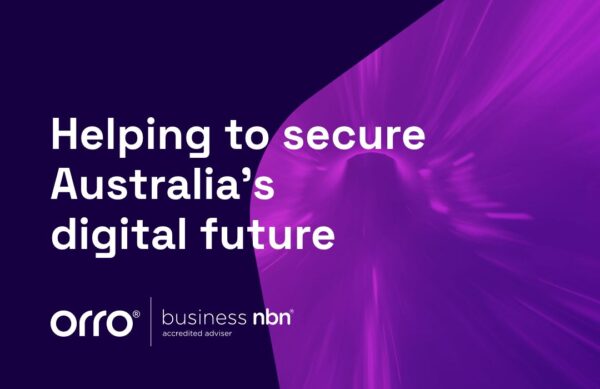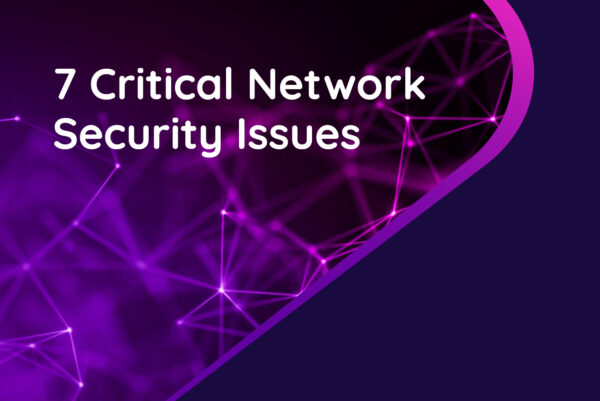By Michael van Rooyen – CTO, Orro
In today’s borderless world, a key challenge for organisations isn’t just staying connected; it’s ensuring that every single connection is secure, no matter where it’s made.
With the shift to remote work, the widespread use of cloud-based apps, and everyone’s love for mobile devices, security has become a lot more complicated. Gone are the days when security was all about guarding a physical boundary. Today, our traditional network perimeter has virtually disappeared, broadening the attack surface.
While the old ways of securing a network aren’t cutting it anymore, there’s an exciting shift towards protecting what really matters: your data, wherever it lives, travels, or is accessed from.
Secure Access Service Edge, or SASE, is at the forefront of this evolution, directly addressing modern security challenges.
The SASE framework explained
What exactly is SASE?
SASE is often mistaken for a plug-and-play solution, when, in fact, it’s an architectural framework that integrates various networking and security functions into a single, cloud-delivered service.
To put it simply, SASE is about strategically assembling the right components (i.e. tools, platforms, and policies) — guided by your needs, goals, and existing infrastructure — to ensure fast, secure, and reliable connectivity from anywhere.
The road that led us to SASE
There are three key advancements in technology that paved the way for the more integrated, secure, and scalable networking framework that we now identify as SASE, a term coined by Gartner in 2019.
These crucial developments include software-defined networking (SDN), which changed how networks are managed by separating control from the actual transfer of data; network function virtualisation (NFV), turning network functions from hardware-reliant to virtual systems; and Software-Defined Wide Area Network (SD-WAN), extending the principles of SDN over larger networks.
The building blocks of a secure and scalable network
While it varies from business to business, there are some common components that come together in a SASE framework:
- Software-Defined Wide Area Network (SD-WAN): SASE leverages SD-WAN technology to ensure resilient, low-latency connectivity across any network, redefining how resources are accessed and shared.
- Secure Web Gateway (SWG): SWG protects users from online threats and enforces compliance policies, acting as a secure intermediary between users and the web.
- Cloud Access Security Broker (CASB): CASB solutions manage access to cloud applications, providing visibility and security for cloud-based resources.
- Data Loss Protection (DLP): DLP technologies offer oversight over data regardless of its state, ensuring its security and compliance.
- Zero Trust Network Access (ZTNA): ZTNA embodies the principle of “never trust, always verify”, granting access to resources based on rigorous authentication.
- Firewall as a Service (FWaaS): FWaaS goes beyond traditional firewall capabilities, integrating advanced threat detection and analysis tools for comprehensive protection.
Consistency in the cloud
As a cloud-native service, SASE eliminates the need for hardware investments and maintenance, allowing you to save costs while still having a secure and flexible network. Whether scaling up to accommodate sudden surges in demand or tightening security protocols in response to emerging threats, SASE architectures enable organisations to pivot fast. No more backhauling traffic to a centralised hub; SASE brings security and connectivity into perfect alignment, wherever your data or users are.
Another key aspect of SASE is its ability to provide a consistent security framework across all locations and devices. With traditional methods, securing remote or branch offices can be a challenge, as they may have different security measures in place compared to the main headquarters. This inconsistency can create vulnerabilities and increase the risk of cyber attacks.
However, with SASE, all locations and devices are connected to a centralised security platform, ensuring consistent protection and reducing potential risks. This also makes it easier for IT teams to manage and monitor security across the entire network.
En route to cyber resilience: Designing a journey that’s uniquely yours
Transitioning to SASE requires a strategic, phased approach based on your organisation’s needs, goals, and existing technology.
Discovery
As with all technology transformations, the SASE journey begins with a deep dive into the current setup of your network and security. This involves understanding where your data lives and travels, how consistent your security policies are across devices and environments, how well you can see into your network, where the workflow bottlenecks are, if your team has all the skills it needs, and any security loopholes.
Once you have a solid grasp of where things stand currently, you’re ready to draw up a roadmap. It’s important that your implementation plan includes clear objectives and ways to measure success. For example, you might be aiming to set up stronger access controls or maintain the same high level of security across your WAN. Or perhaps, your goal is to make your network more adaptable to changes in demand and the threat landscape.
Design and deployment
Based on the findings from the discovery phase, you’re all set to craft a bespoke plan and framework for your SASE implementation. In this crucial phase, there are several considerations to take into account:
- Scalability — both horizontal and vertical: Your network should be able to easily handle more users and data traffic, ready to expand at a moment’s notice (horizontal scalability). You should also have the flexibility to add more security features to your setup as your business grows and changes (vertical scalability).
- Centralised control over policies and reporting: Managing and reporting security policies from one place doesn’t just save time; it removes security gaps and maintains consistent protection across all users, locations, and devices.
- Two-way zero trust security: It’s crucial to protect your networks against both inside and outside threats. This means securing your applications from unauthorised users, whilst protecting authorised users from harmful applications or content.
- Protection for unmanaged devices: With a diverse workforce comes a range of devices, not all of which you control. Supporting unmanaged devices means your security measures are flexible enough to protect data, no matter the device it’s accessed on.
- A unified platform: Opting for a centralised management platform that protects all data, applications, and cloud services is key to ensuring your operations remain cyber resilient.
After pinpointing all the essential network security components, the next step is to put them into place. Remember, your SASE deployment isn’t an overnight switch; it’s a phased, strategic process where prioritisation is key. If you have significant security gaps putting your business at risk, the first phase of the deployment might focus on addressing those vulnerabilities.
Continuous improvement
Post-implementation, the focus shifts to the ongoing management of the SASE architecture. This involves continuous monitoring, assessment, and optimisation to ensure that the framework not only meets current business needs but is also positioned to adapt to future changes. For example, this could mean updating your security policies or integrating more components into your SASE architecture.
Orro’s take on SASE
SASE is not just another addition to the cybersecurity lexicon; nor is it a fleeting trend.
The trajectory of SASE points towards even greater integration of network and security functions among organisations. This is particularly exciting as we witness the convergence of AI, analytics, and automation with network and security functions, paving the way for smarter, more responsive, and self-optimising systems.
Understandably, the prospect of transitioning to a sophisticated SASE framework might appear daunting at first. Questions around deployment complexity, operational challenges, and scalability are common. However, when your SASE transformation is delivered as a fully managed service, these concerns quickly dissipate.
At Orro, we carefully crafted our SASE service offering with your ease in mind. Orro SASE combines the most advanced network, security, and management technologies, with top-tier in-house network, security, and implementation expertise for every managed SASE project we take on, making the journey smooth for you and ensuring you see the benefits faster.
Having a knowledgeable and experienced partner like Orro can make a world of difference, providing a clear path towards being securely connected, everywhere.




